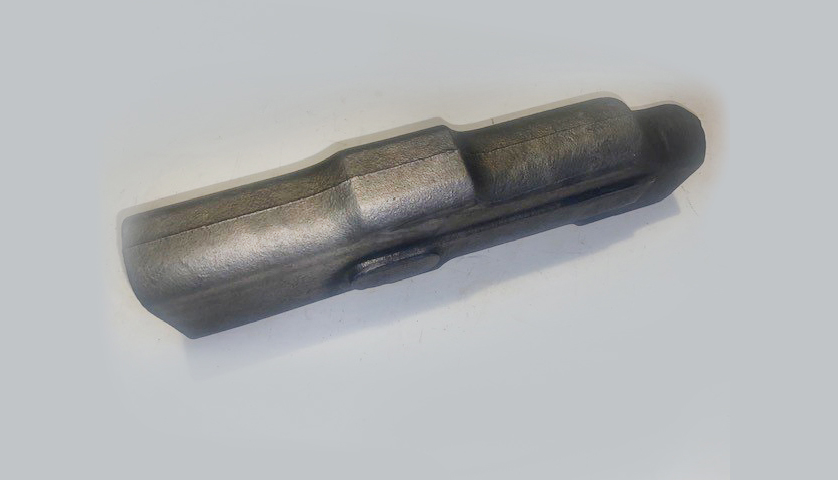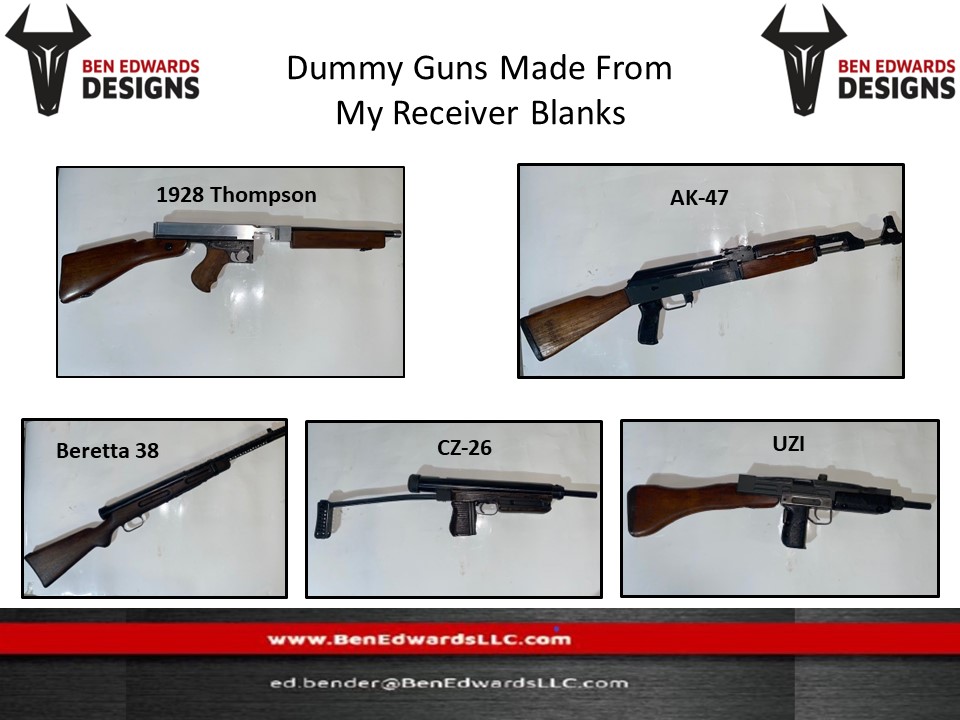Description
Available in in either steel or aluminum, these castings are made with the Philadelphia Ordnance tooling that has been used for over 30 years. No FFL Needed.
Ben Edwards Designs Product Catalog
M1918, M1918A2 BAR – Philadelphia Ordnance (philaord.com)
Background
The Browning Automatic Rifle (BAR) is a family of American automatic rifles and machine guns used by the United States and numerous other countries during the 20th century. The primary variant of the BAR series was the M1918, chambered for the .30-06 Springfield rifle cartridge and designed by John Browning in 1917 for the American Expeditionary Forces in Europe as a replacement for the French-made Chauchat and M1909 Benét–Mercié machine guns that US forces had previously been issued.
The BAR was designed to be carried by infantrymen during an assault advance while supported by the sling over the shoulder, or to be fired from the hip. This is a concept called “walking fire”—thought to be necessary for the individual soldier during trench warfare. The BAR never entirely lived up to the original hopes of the War Department as either a rifle or a machine gun.
The US Army, in practice, used the BAR as a light machine gun, often fired from a bipod (introduced on models after 1938). A variant of the original M1918 BAR, the Colt Monitor Machine Rifle, remains the lightest production automatic firearm chambered for the .30-06 Springfield cartridge, though the limited capacity of its standard 20-round magazine tended to hamper its utility in that role.
Although the weapon did see some action in World War I, the BAR did not become standard issue in the US Army until 1938, when it was issued to squads as a portable light machine gun. The BAR saw extensive service in both World War II and the Korean War and saw limited service in the Vietnam War. The US Army began phasing out the BAR in the 1950s, when it was intended to be replaced by a squad automatic weapon (SAW) variant of the M14, and as a result the US Army was without a portable light machine gun until the introduction of the M60 machine gun in 1957.
Technical Information
| Designer | John Browning |
| Designed | 1917 |
| Manufacturer | Colt’s Patent Firearms Manufacturing Company |
| Winchester Repeating Arms Company | |
| Marlin-Rockwell Corporation | |
| New England Small Arms | |
| Royal McBee Typewriter Company | |
| IBM | |
| Carl Gustafs Stads Gevärsfaktori | |
| Państwowa Fabryka Karabinów | |
| FN Herstal | |
| Unit cost | $319 |
| Produced | 1917–1945 |
| No. built | 351,679 |
| 102,174: M1918 | |
| 125: Monitor Machine Rifle | |
| 249,380: M1918A2 | |
| Variants | See Variants |
| Specifications | |
| Mass | 7.25 kg (15.98 lb) (M1918) |
| approx. 11 kg (24 lb) (M1922) | |
| 6.0 kg (13.2 lb) (Colt Monitor) | |
| 8.4 kg (19 lb) (M1918A1) | |
| 8.8 kg (19 lb) (M1918A2) | |
| 9.0 kg (19.8 lb) (wz. 1928) | |
| Length | 1,194 mm (47.0 in) (M1918, M1922, M1918A1) |
| 1,215 mm (47.8 in) (M1918A2) | |
| 1,110 mm (43.7 in) (wz. 1928) | |
| Barrel length | 610 mm (24.0 in) (M1918, M1922, M1918A1, M1918A2) |
| 611 mm (24.1 in) (wz. 1928) | |
| 458 mm (18.0 in) (Colt Monitor) | |
| Cartridge | .30-06 Springfield (7.62×63mm)/.303 British (7.7×56mmR)/7.92×57mm Mauser (M1918, M1922, M1918A1, M1918A2) |
| 7.92×57mm Mauser (wz. 1928) | |
| 6.5×55mm (Kg m/21, m/37) | |
| Action | Gas-operated, rising bolt lock |
| Rate of fire | 500–650 rounds/min (M1918, M1922, M1918A1) |
| 500 rounds/min (Colt Monitor) | |
| 300–450 or 500–650 rounds/min (M1918A2) | |
| 600 rounds/min (wz. 1928) | |
| Muzzle velocity | 860 m/s (2,822 ft/s) (M1918, M1922, M1918A1, M1918A2) |
| 853 m/s (2,798.6 ft/s) (wz. 1928) | |
| Effective firing range | 100–1,500 yards (91–1,372 m) sight adjustments (maximum effective range) |
| Maximum firing range | approx. 4,500–5,000 yards (4,100–4,600 m) |
| Feed system | 20-round detachable box magazine (7oz empty; 1lb, 7oz full) |
| 40-round detachable box magazine (14 oz empty; 2lb 7oz full. Used for anti-aircraft) | |
| Sights | Rear leaf, front post |
| 784 mm (30.9 in) sight radius (M1918, M1922, M1918A1) | |
| 782 mm (30.8 in) (M1918A2) | |
| 742 mm (29.2 in) (wz. 1928) | |
Design details and accessories
The M1918 is a selective-fire, air-cooled automatic rifle using a gas-operated, long-stroke piston rod actuated by propellant gases bled through a vent in the barrel. The bolt is locked by a rising bolt lock. The weapon fires from an open bolt. The spring-powered cartridge casing extractor is contained in the bolt and a fixed ejector is installed in the trigger group. The BAR is striker-fired (the bolt carrier serves as the striker) and uses a trigger mechanism with a fire selector lever that enables operating in either semi-automatic or fully automatic firing modes. The selector lever is located on the left side of the receiver and is simultaneously the manual safety (selector lever in the “S” position – weapon is safe, “F” – fire, “A” – automatic fire). The “safe” setting blocks the trigger.
The weapon’s barrel is screwed into the receiver and is not quickly detachable. The M1918 feeds using double-column 20-round box magazines, although 40-round magazines were also used in an anti-aircraft role; these were withdrawn from use in 1927. The M1918 has a cylindrical flash suppressor fitted to the muzzle end. The original BAR was equipped with a fixed wooden buttstock and closed-type adjustable iron sights, consisting of a forward post and a rear leaf sight with 100 to 1,500 yard (91-1,372 m) range graduations.
As a heavy automatic rifle designed for support fire, the M1918 was not fitted with a bayonet mount and no bayonet was ever issued, though one experimental bayonet fitting was made by Winchester.






Reviews
There are no reviews yet.